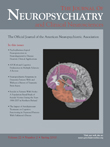Detection of Attention Using Chaotic Global Features
To the Editor: Attention as a selective gating mechanism is often compared to a spotlight, enhancing visual processes in the attended region of visual angle. 1 The size of the attended region can be adjusted depending on the task, making attention similar to a zoom lens. 2
Based on psychological studies, different types of attention (e.g., sustained attention, focused attention, selective attention, or internal attention) have been defined. Most of the EEG researchers have focused on frequency changes associated with different kinds of attentive tasks. For example, an increase in delta activity may be related to attention to internal processing during the performance of a mental task, 3 alpha-synchronization has been found to be an important component of selective attention, 4 and other studies show that EEG activity in the gamma range can be modulated by voluntary attention rather than involuntary capture of attention. 5 In other words, no global feature exists to represent the attention during EEG recordings, and there is not any global feature to quantify all kinds of attention.
On the other hand, chaotic tools are best known for having global characteristics. In fact, a chaotic approach can extract global information to quantify attention better than the conventional local approaches. The known global features such as correlation dimension, fractal dimension, and Lyapunov exponent are suitable for this purpose. Since attention is directly related to neural synchronization, 6 and these features also demonstrate synchronization, as the strength of attention increases, the amount of the global features decreases. So, in this way attentive state and its strength can be distinguished, regardless of its kind.
Based on above mentioned points, we hypothesize that chaotic tools rather than frequency approaches are suitable for studying attention in humans. Surely, experimental research is needed to validate our hypothesis.
1. Sagi D, Julesz B: Enhanced detection in the aperture of focal attention. Nature 1986; 321:693–695Google Scholar
2. Eriksen CW, St James JD: Visual attention within and around the field of focal attention: a zoom lens model. Percept Psychophys 1986; 40:225–240Google Scholar
3. Harmony T, Fernandez TF, Silva J, et al: EEG delta activity: an indicator of attention to internal processing during performance of mental tasks. Int J Psychophysiol 1996; 24:161–171Google Scholar
4. Rihs TA, Michel CM, Thut G: Mechanisms of selective inhibition in visual spatial attention are indexed by alpha-band EEG synchronization. Eur J Neurosci 2007; 25:603–610Google Scholar
5. Landau AN, Esterman M, Robertson LC, et al: Different effects of voluntary and involuntary attention on EEG activity in the gamma band. J Neurosci 2007; 27:11986–11990Google Scholar
6. Womelsdorf T, Fries P: The role of neuronal synchronization in selective attention. Curr Opin Neurobiol 2007; 17:154–160Google Scholar



